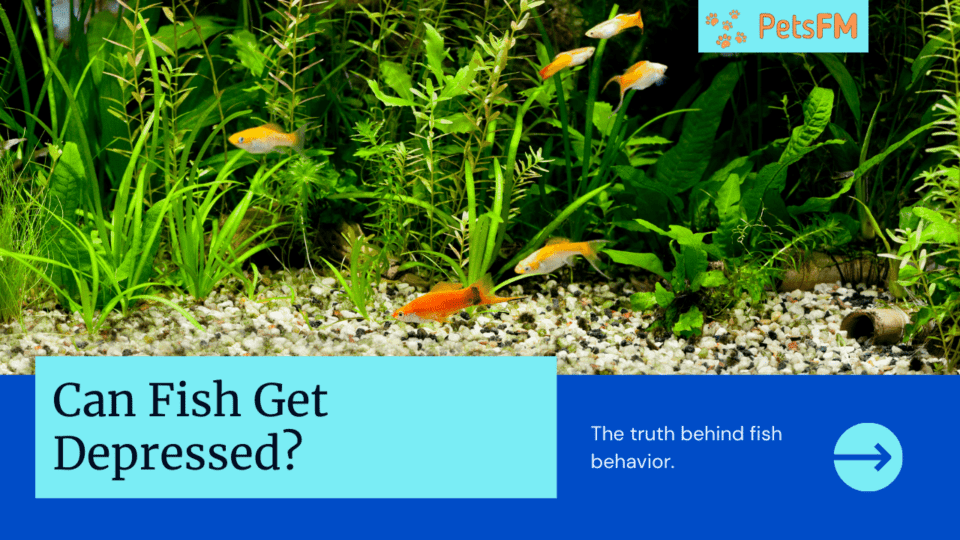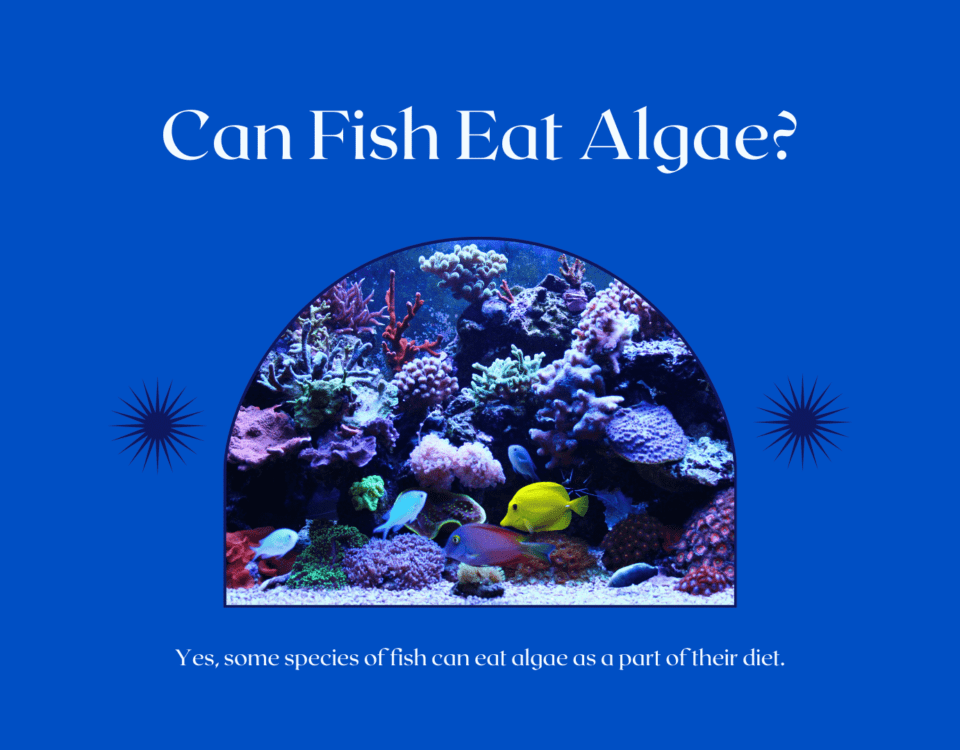


9 Fish That Play Dead (& Facts You Should Know)
February 25, 2024


Overweight & Obesity in Fish: Prevention and Action
February 25, 2024Are you concerned that your pet fish might be feeling a bit down? It may seem unusual to think about fish being depressed, but like all living beings, they, too, can experience mood changes that could be likened to depression. If you’ve been wondering, “Is my fish depressed?” you’re in the right place.
This blog post aims to illuminate the topic by discussing common causes, signs to watch for, and possible treatments to help your aquatic friend. Understanding the emotional well-being of your fish is crucial, and recognizing the need for extra care can make all the difference. Let’s jump in and learn more about ensuring the happiness and health of your pet fish.
But here’s a quick answer: Yes, fish can show signs of depression. Behavioral changes like reduced activity, loss of appetite, and less interaction with their environment or other fish can indicate stress or depression. It’s essential to monitor their habitat and health for their well-being.
What are the causes behind fish depression?
Fish depression can stem from various environmental and social factors. The primary contributors are poor tank conditions, lack of stimulation, and social isolation. These stressors can lead to noticeable changes in behavior and health.
1: Poor water quality
Water quality is vital to fish’s overall health and happiness. Ammonia, nitrite levels, pH imbalances, and lack of oxygen can significantly impact their well-being.
Fish living in water that is either too dirty or chemically imbalanced can suffer from stress, which may manifest as lethargy, loss of appetite, and other signs akin to depression. Monitoring and maintaining the tank’s water conditions are essential to prevent these adverse effects.
Related Read: Why can’t fish live in tap water? [A Guide]
2: Social isolation
Social interaction is a key aspect of life for many fish species. Being isolated, especially for social species, can lead to signs of depression. Fish in social isolation may exhibit changes in behavior, such as reduced swimming, eating less, or showing a lack of interest in their environment.
Conversely, overcrowding can also be stressful and lead to aggressive behaviors. Finding the right balance and ensuring that fish have compatible tank mates can greatly improve their mental health and overall well-being.
3: Inadequate diet
A balanced and nutritious diet is vital for the health and well-being of fish. An improper diet can lead to nutritional deficiencies, weakening their immune system and leading to issues like stress, which can manifest in behaviors similar to depression.
Fish require various nutrients, which should be tailored to their specific species’ needs. Feeding them a diverse and species-appropriate diet can help prevent dietary deficiencies and support their overall mood and health.
4: Lack of stimulation
A stimulating environment is crucial for the mental health of fish, much like it is for humans and other animals. Tanks that lack variety, such as those without plants, hiding spots, or areas to explore, can lead to boredom and stress.
This monotony can cause fish to become less active and show less interest in their surroundings, behaviors that are often interpreted as signs of depression. Providing an enriched habitat with decorations, varied terrain, and opportunities for natural behaviors can help prevent these issues.
Also, Read: Why Does My Fish Tank Lose Water? Causes & Solutions!
5: Overcrowding
Overcrowding in a tank can be a significant source of stress for fish, leading to competition for food, space, and resources. This high-stress environment can result in aggressive behavior, increased proneness to disease, and a decrease in overall health, which may be perceived as depressive-like symptoms.
Ensuring that your fish have ample space to swim and establish territories is essential for their physical and mental health. Proper tank size and compatible species stocking can mitigate the adverse effects of overcrowding.
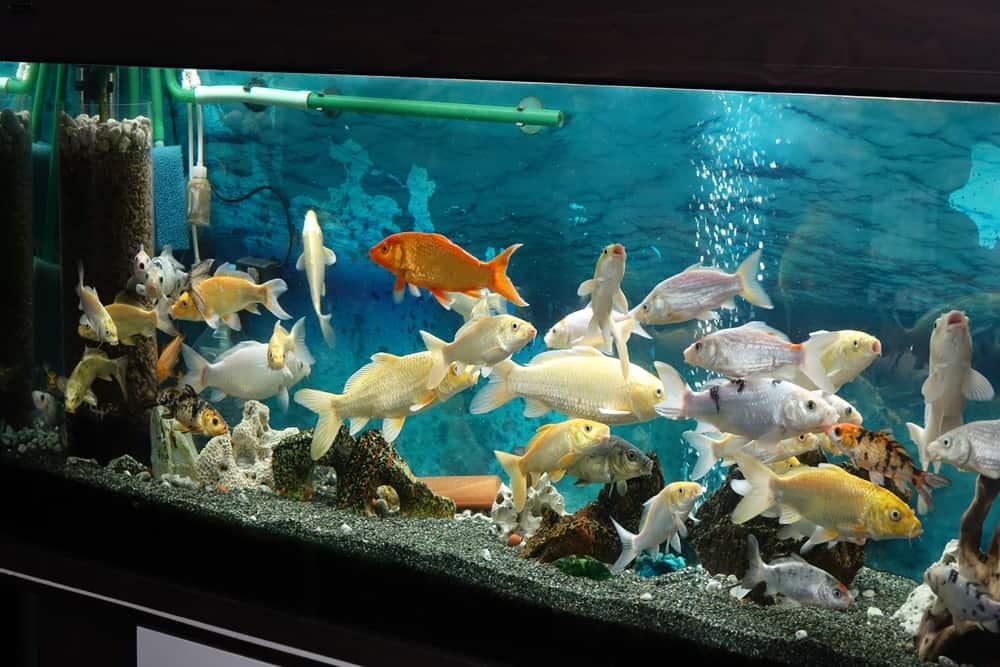

Overcrowding in Tank
How do you know your fish is depressed? What are the symptoms?
Identifying depression in fish can be challenging, as the symptoms are often subtle and can vary between species. However, changes in behavior, appetite, and activity levels are key indicators.
Observing your pet fish regularly can help you notice these signs early on.
1: Decreased activity
One of the most noticeable signs of depression in fish is a marked reduction in their usual activity levels.
- Fish that are typically vibrant and exploratory might become lethargic, choosing to remain in a secluded part of the tank rather than swimming freely.
- This decrease in activity could respond to stressors in their environment, such as ammonia/nitrate poisoning due to poor water quality or lack of stimulation.
- It’s essential to observe if the fish is consistently less active than usual, as temporary changes can also be due to other factors like changes in water temperature.
2: Loss of appetite
When fish are depressed or stressed, one of the first signs is often a loss of appetite.
- This symptom is particularly concerning as it can lead to further health issues, including weight loss and weakened immunity.
- If you notice your fish is not eating as much as usual or ignoring food, it’s essential to investigate potential causes.
- Changes in diet, water quality, or even the presence of more aggressive tank mates can contribute to this behavior.
3: Changes in swimming patterns
Abnormal swimming patterns can also indicate that a fish is not in its best mental state.
- This includes erratic swimming, swimming close to the surface or the bottom of the tank for extended periods, or rubbing against objects in the tank.
- These behaviors could signal discomfort due to the tank’s environmental conditions or internal issues like parasites or infections.
- Observing these changes in swimming behavior can provide early clues to address potential problems before they escalate.
4: Dull colors
Many fish species display brighter colors when they are healthy and stress-free.
- If a fish’s colors become noticeably duller without a change in lighting or other environmental factors, this could be a sign of stress or depression.
- Dull colors often reflect poor health or a compromised immune system, making fish more susceptible to diseases.
- Restoring the fish’s vibrant colors requires identifying and mitigating the stressors affecting its well-being.
5: Hiding more than usual
While it’s normal for some fish to seek out hiding spots, especially when they feel threatened or need rest, excessive hiding is a cause for concern.
- If a fish spends more time hiding than interacting with its environment or other fish, it may feel stressed or depressed.
- This behavior can be triggered by various factors, including aggressive tank mates, inadequate hiding spaces, or too much noise and activity outside the tank.
- Providing a safe, enriched environment with plenty of hiding spots can help reduce this behavior, but ensuring that the fish’s social needs are also essential.
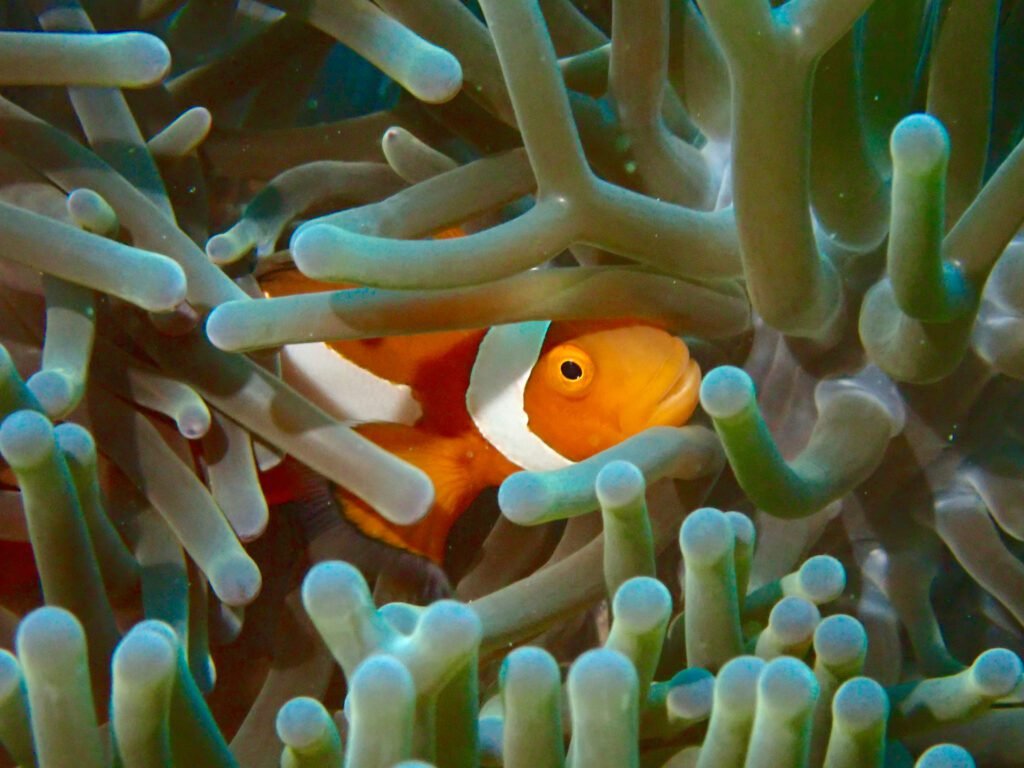

Clown Fish Hiding
What can you do to prevent your pet fish from being depressed?
Preventing depression in pet fish involves creating an environment that meets their physical and psychological needs. By ensuring their habitat is stimulating and comfortable, you can significantly reduce the risk of stress or depression.
Here are several strategies to help keep your aquatic friends happy and healthy:
1: Regularly check water quality
Maintain the tank’s water quality by regularly checking and adjusting the pH, ammonia, nitrite, and nitrate levels. Clean water is fundamental to fish health and happiness.
2: Provide a varied diet
Offer your fish a diverse diet that mimics their natural food sources. A varied diet enhances their physical health and provides mental stimulation.
3: Create a stimulating environment
Decorate the tank with plants, rocks, and hiding places to mimic a natural environment. This adds complexity to their habitat, encouraging exploration and natural behaviors.
4: Ensure adequate space
Avoid overcrowding by providing enough space for each fish to swim and establish territories. A spacious tank reduces stress and aggression among tank mates.
5: Introduce compatible species
Carefully select fish species that are best compatible with each other to prevent bullying and stress. Social species should be kept in groups to fulfill their need for interaction.
6: Implement a fighting schedule
Mimic natural day and night cycles with a consistent lighting schedule support your fish’s internal clock, reducing stress and anxiety, and promoting a healthy sleep cycle.
7: Offer enrichment activities
Introduce toys or change the tank’s layout periodically to provide new stimuli, keeping your fish engaged and curious.
8: Monitor health regularly
Keep an eye on your fish for any signs of disease or distress. Early detection and treatment of health problems can prevent stress and improve their quality of life.
9: Minimize external stressors
Reduce loud noises, vibrations, and sudden movements around the tank. A calm environment helps prevent stress in fish.
10: Establish a routine
Fish thrive on routine. Regular feeding times and maintenance schedules create a healthy and stable environment to help reduce anxiety and stress.
Editor’s Pick: Can a fish actually drown? Let’s find out!
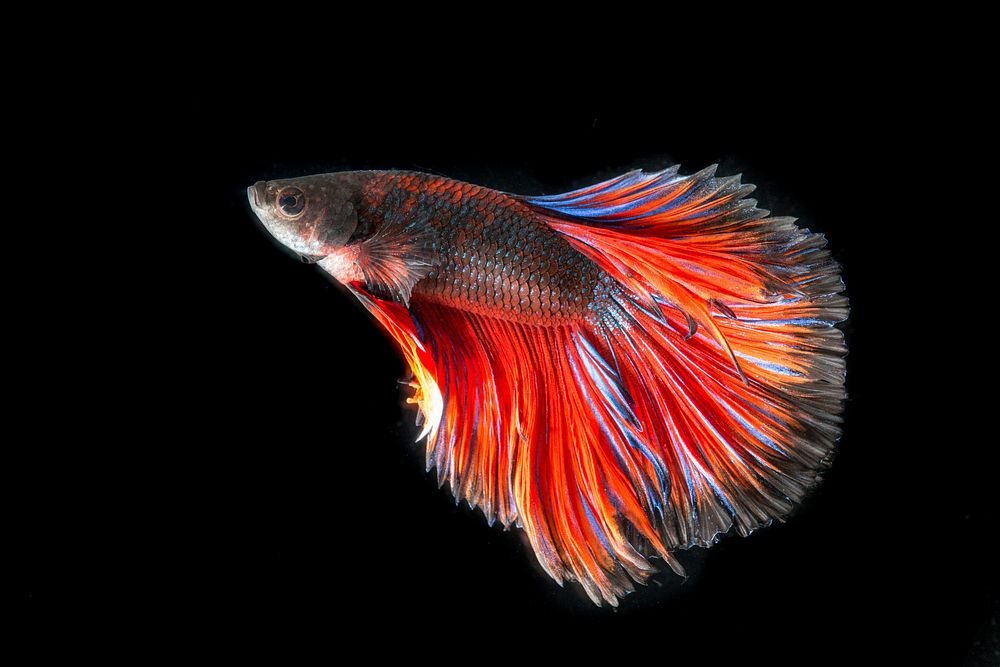

Red Betta Fish
Can depression kill fish?
Indirectly, yes. While depression itself may not directly cause death, the behaviors associated with depression, such as reduced appetite and decreased activity, can weaken a fish’s immune system, making it more susceptible to disease and health issues. Proper care and addressing the underlying causes of depression are crucial to prevent these potentially fatal outcomes.
Conclusion
In conclusion, like any pet, fish require attentive care and a nurturing environment to prevent depression. By maintaining clean water, providing a varied diet, ensuring ample space, and offering mental stimulation, you can support the emotional well-being of your aquatic friends, ensuring they lead vibrant and fulfilling lives within their tanks.
